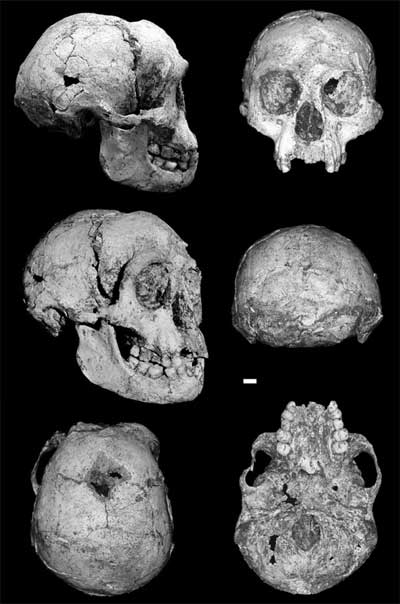Found: October 1907
Where: Mauer, Germany
When: 800 to 350 thousand years ago
It has a massive, projecting face and brow ridge, a low frontal bone, and a thickening of bone along the top of the skull from front to back.

Reference: http://anthro.palomar.edu/homo2/mod_homo_1.htm
Homo Habilis
Found: November 1964
Where: Olduvai Gorge, Tamaznia
When: 2.5 to 1.6 million years ago
It has a big vertical forehead. a small brow ridge, and small cheek teeth.

Reference: http://www.ecotao.com/holism/hu_habilis.htm
Homo Erectus
Found: October 1891
Where: Trinil, Indonesia
When: 1.8 million to 50 thousand years ago
It has large teeth, sagittal keels, a massive part of the skull that covers and protects the brain, and has a large face.

Reference: http://compuball.com/Inquisition/homo.htm
Australopithecus Anamensis
Found: September 1994
Where: Kanapoi and Allia Bay, Kenya
When: 4.1 to 3.9 million years ago

Reference: http://truthopia.wordpress.com/2009/02/20/i-science-f-the-origin-of-man-evolution-style/
Homo Floresiensis
Found: September 2003
Where: Flores Island, Indonesia
When: 100,000 to 12,000 years ago
The face is small, specifically in facial height and has a small upper and lower jaw. The brain is also very small (380 to 420 cubic centimeters).

Reference: http://anthropology.net/2008/11/12/a-quick-review-of-novas-alien-from-earth/homo-floresiensis-2/
The skulls of our closest ancestors tell the tale of human origins and the closeness of our evolutionary history to climate change. The shapes of the hominids's skulls changed over time due to global warming. The earliest known hominids are members of the genus Australopithecus. Unlike other primates, but like hominids, their crania were small and apelike. They have been linked to the discovery of the first Homo Sapien fossils.
No comments:
Post a Comment